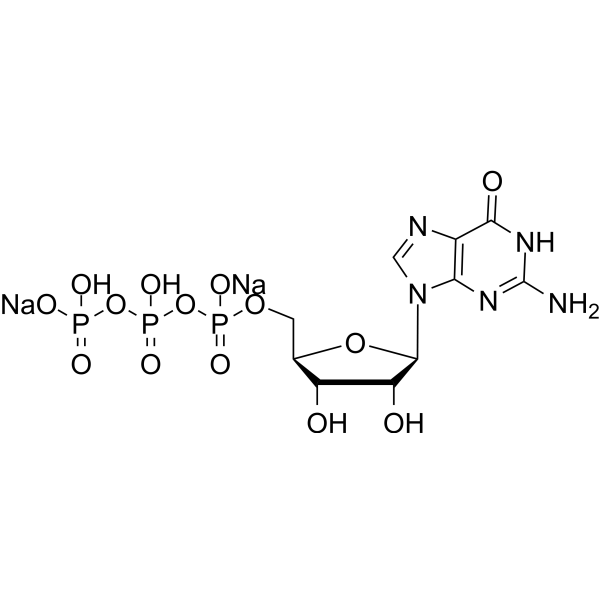
Guanosine-5-triphosphate disodium salt
CAS No. 56001-37-7
Guanosine-5-triphosphate disodium salt( 5'-GTP disodium salt )
Catalog No. M26240 CAS No. 56001-37-7
Guanosine-5'-triphosphate disodium salt is an enhancer of myogenic cell differentiation and an energy source for translation and other important cellular processes.
Purity : >98% (HPLC)
 COA
COA
 Datasheet
Datasheet
 HNMR
HNMR
 HPLC
HPLC
 MSDS
MSDS
 Handing Instructions
Handing Instructions
| Size | Price / USD | Stock | Quantity |
| 200MG | 31 | Get Quote |


|
| 500MG | Get Quote | Get Quote |


|
| 1G | Get Quote | Get Quote |


|
Biological Information
-
Product NameGuanosine-5-triphosphate disodium salt
-
NoteResearch use only, not for human use.
-
Brief DescriptionGuanosine-5'-triphosphate disodium salt is an enhancer of myogenic cell differentiation and an energy source for translation and other important cellular processes.
-
DescriptionGuanosine-5'-triphosphate disodium salt is an enhancer of myogenic cell differentiation and an energy source for translation and other important cellular processes.
-
In Vitro——
-
In Vivo——
-
Synonyms5'-GTP disodium salt
-
PathwayOthers
-
TargetOther Targets
-
RecptorBAZ1A
-
Research Area——
-
Indication——
Chemical Information
-
CAS Number56001-37-7
-
Formula Weight567.144
-
Molecular FormulaC10H14N5Na2O14P3
-
Purity>98% (HPLC)
-
SolubilityIn Vitro:?H2O : 125 mg/mL (220.40 mM)
-
SMILES[Na+].[Na+].Nc1nc2n(cnc2c(=O)[nH]1)C1OC(COP([O-])(=O)OP(O)(=O)OP(O)([O-])=O)C(O)C1O
-
Chemical Name——
Shipping & Storage Information
-
Storage(-20℃)
-
ShippingWith Ice Pack
-
Stability≥ 2 years
Reference
1.Yang Z, et al. Discovery of BAZ1A bromodomain inhibitors with the aid of virtual screening and activity evaluation. Bioorg Med Chem Lett. 2021;33:127745.
molnova catalog



related products
-
2-(Trifluoromethyl)b...
Compound Fr12535 is a useful organic compound for research related to life sciences.
-
4-Nitrobenzoic acid
4-Nitrobenzoic acid (4Nitrobenzoic acid) is a pharmaceutical intermediate often found in the production of folic acid, DABA, PABA and dyes.
-
β-Lipotropin (88-91)
β-Lipotropin (88-91)



 Cart
Cart
 sales@molnova.com
sales@molnova.com


